March 18, 2022
Air Date: March 18, 2022
FULL SHOW
SEGMENTS
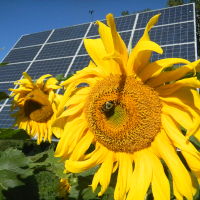
Heat Pumps for Peace
View the page for this story
Amid the war in Ukraine, Europe has vowed to quickly wean itself off Russian gas. Climate activist and writer Bill McKibben joins Host Bobby Bascomb to explain his idea to invoke the Defense Production Act to rapidly manufacture electric heat pumps and send them to European homes as a way to permanently weaken Vladimir Putin’s oil and gas fueled war machine while fighting climate change. (12:44)
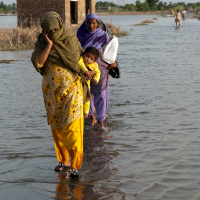
Aid and Empathy for Climate Refugees
View the page for this story
Millions of white Ukrainian refugees have been welcomed by neighboring countries, while many black and brown refugees from the Global South are routinely turned away. Climate change is expected to displace as many as 200 million people, many of them people of color, by the year 2050. Kayly Ober, Program Manager for the Climate Displacement Program at Refugees International, joins Host Bobby Bascomb to talk about the intersections between the refugee crisis, racism, and climate change. (10:48)
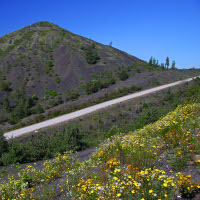
Beyond the Headlines
/ Peter DykstraView the page for this story
On this week's trip beyond the headlines, Environmental Health News Weekend Editor Peter Dykstra joins Host Bobby Bascomb first to discuss a former coal mining region that now boasts green tourism. Then the two take a look at a program to feed lettuce to starving manatees. Finally, they mark what would have been the 100th birthday of Hiroo Onoda, an Imperial Japanese intelligence officer best known for living 29 years in the mountains of the Philippines after the end of World War II. (04:30)

A Patent-Free Covid Vaccine
/ Aynsley O'NeillView the page for this story
A new patent-free COVID vaccine called CORBEVAX has been developed to expand vaccine access to people in low- and middle-income countries. Peter Hotez, Co-Director of the Texas Children’s Hospital Center for Vaccine Development, spoke with Living on Earth's Aynsley O'Neill about how the low cost and easy production of this vaccine could help close the gap in vaccine equity worldwide. (08:37)

The Comeback Monarchs
View the page for this story
The population of Western Monarch butterflies has increased by more than 100-fold this year after reaching an all-time low last year of just 2,000 individuals. Executive Director of The Xerces Society for Invertebrate Conservation, Scott Hoffman Black joins Host Bobby Bascomb to talk about the potential explanations for the comeback. (07:36)

Bald Eagle in Central Park
/ Sophia PandelidisView the page for this story
Bald eagles were nearly driven to extinction in the 20th century but are now making a big comeback. These majestic creatures are becoming so common that people including Living on Earth's Sophia Pandelidis are spotting them in the most unexpected places, even the heart of Manhattan. (02:57)
Show Credits and Funders
Show Transcript
220318 Transcript
HOSTS: Bobby Bascomb
GUESTS: Scott Hoffman Black, Peter Hotez, Bill McKibben, Kayly Ober
REPORTERS: Peter Dykstra, Sophia Pandelidis
[THEME]
BASCOMB: From PRX – this is Living On Earth.
[THEME]
BASCOMB: I’m Bobby Bascomb.
The war in Ukraine is shining a light on the urgent need to switch from fossil fuels to clean energy.
MCKIBBEN: This moment is a remarkable reminder of all the reasons why we should be quickly making that switch, not just in order to save the planet's climate, though that would certainly be nice. But also because Vladimir Putin, or anyone like him, can't embargo the sun, they can't put a stop to the wind.
BASCOMB: Also, a patent-free Corona Virus vaccine that could dramatically increase vaccination rates for low-income countries.
HOTEZ: When you go through the list of things, simple refrigeration, no limit to the amount you could scale, lowest cost, widespread acceptance, vegan technology, you know, it checks a lot of boxes that you'd want for a global health vaccine.
BASCOMB: That and more this week on Living on Earth – Stick Around!
[NEWSBREAK MUSIC: Boards Of Canada “Zoetrope” from “In A Beautiful Place Out In The Country” (Warp Records 2000)]
[THEME]
Heat Pumps for Peace

Solar panels and sunflowers, the national flower of Ukraine. Solar energy is not highly concentrated in specific places the way that fossil fuels like oil, gas, and coal are, meaning that an autocrat cannot restrict the supply of renewable energy in the same way. (Photo: Sterling College, Flickr, CC BY-SA 2.0)
BASCOMB: From PRX and the Jennifer and Ted Stanley Studios at the University of Massachusetts Boston, this is Living on Earth. I’m Bobby Bascomb.
The horrors of Russia’s war in Ukraine are funded in large part by fossil fuels that it sells to the tune of half a billion dollars every day. Nearly half the federal budget for Russia comes from oil and gas revenue and the European Union is their biggest customer, roughly 40 percent of Europe’s gas supply is imported from Russia. But the EU recently unveiled a plan to cut Russian gas imports by two thirds this year and eliminate imports entirely by 2027. To help speed that phase out the Biden White House is reportedly considering a plan to use the Defense Production Act to rapidly manufacture and send electric heat pumps to European homes, many of which are currently heated by Russian gas. This idea to make heat pumps for peace was first raised by writer and activist Bill McKibben, who co-founded 350.org and Third Act. Bill McKibben joins me now from Vermont – welcome back to Living on Earth!
MCKIBBEN: Pleasure to be with you.
BASCOMB: So first remind us, what exactly is a heat pump?
MCKIBBEN: Well, a heat pump's actually very cool new technology. Cool, in particular, because it's closely related to the air conditioner. Think of it as an almost reversible air conditioner, made often by the same people. It takes ambient heat from the air, and uses that to heat the inside of your house, and does it pretty well, down to quite cold temperatures, because it turns out there remains some latent heat in the air even on a cold day. It's wonderful technology because it's able to produce heat with far, far less emissions than if you were running the gas furnace or the oil furnace in the basement. It runs off electricity, which means that the cleaner you get the grid, the cleaner the emissions result. And in the case of the current war in the Ukraine, it's particularly significant because deployed in sufficient number across Europe, it would rob Vladimir Putin of his longtime weapon, the threat to turn off the gas supply to Western Europe.
BASCOMB: Well, but as you mentioned, heat pumps do still have to be powered by electricity. So how effective are they at actually reducing emissions and dependence on that Russian oil if the bulk of that electricity is produced by burning Russian gas?
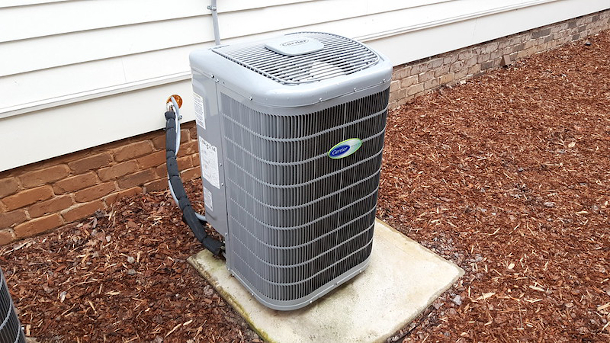
Heat pumps collect heat energy from outside a home and move it inside to heat the house, even during frigid temperatures. In the summertime most heat pumps can reverse the flow of energy to cool the home. (Photo: FANFAN61618, Flickr, CC BY-SA 2.0)
MCKIBBEN: Well, in the first place, they're more efficient than just burning gas in your furnace in the basement. So even if that's was all you were using, you'd still be better off. But in truth, what you really want, of course, is to connect them to a grid that gets steadily, steadily cleaner. That's what the EU has announced they're going to do, in the wake of the Ukraine invasion, they said they'd be running on renewables entirely by 2035. Obviously, this moment is a remarkable reminder of all the reasons why we should be quickly making that switch, not just in order to save the planet's climate, though that would certainly be nice. But also because Vladimir Putin, or anyone like him, can't embargo the sun, they can't put a stop to the wind. Look, fossil fuel is the fuel of choice for autocrats because it favors those people who happen to sit atop the few deposits of coal or gas or oil that are scattered around the planet. All of us are lit by the sun and washed by the wind. So in a world that runs off renewable energy, no one gets unearned power simply because of where they happen to be sitting.
BASCOMB: Well, why push for heat pumps then and not say, expanded rooftop solar, for instance?
MCKIBBEN: That works too, go to work on any of these things. In fact, some of the things are super easy. There's a lot of spare capacity in the US, apparently, for producing insulation right now. And anybody who's spent time say, in a British house knows that insulation was not a big feature of a lot of the housing stock. So let's get bundles of that across the ocean as fast as we can. The point is that if we're able to make use, say, of the Defense Production Act, which every president since the Korean War has used, and which both Trump and Biden used to speed up vaccine production, then we can take advantage of this spare capacity and get some of this stuff over to Europe before next October, when I would predict it's going to start getting cold again. So let's get on it, sooner rather than later.
BASCOMB: Tell us a bit more about the Defense Production Act as a tool to quickly ramp up production of heat pumps in this case, how easy is it for the President to invoke the DPA, and maybe give us a couple of relevant examples of when it's been used?
MCKIBBEN: Well, they've done it repeatedly, 50 times since Korea, and most recently, as I said, to speed up vaccine production. But also, Joe Biden invoked it because after last summer's record wildfires in the West, we were running out of fire hose. So the DPA, the Defense Production Act was invoked in order to get a factory in Oklahoma churning out mile upon mile of fire hose in the time that was needed. Really, what we're talking about here, is going back to what the US did before the Second World War. You'll recall that before Pearl Harbor was bombed, but while the war in Europe had begun to rage, the US did something called Lend-Lease, where they sent vast quantities of material, food and other supplies, across the Atlantic in ships. And that really was crucial to sustaining the British for a year or two until Pearl Harbor and America entering the war. That's what we should be doing again, on that scale.

A group of smiling children sit at a table and eat cheese imported from America as part of the Lend-Lease program in 1941 in the playground of a severely bomb-damaged school. (Photo: Ministry of Information Photo Division Photographer / UK Gov’t, public domain)
BASCOMB: That sounds like a lot of job creation as well.
MCKIBBEN: Yeah, a lot of job creation and jobs that people right now would be eager to do, because all of us are looking for ways to try and figure out how to stand with the very brave people in the Ukraine.
BASCOMB: Well, how quickly can manufacturers ramp up production of heat pumps on the massive scale that would be needed to quickly phase Europe off of gas?
MCKIBBEN: Well, the people that I've talked to in the federal government think that it can happen pretty fast, that there's spare capacity at the big air conditioner manufacturers, companies like Carrier or Trane that would allow them to start pretty quickly putting this stuff into operation. And that talking about the course of the next six months for getting a lot of these installed is not crazy. But again: heat pumps, insulation, whatever we can think of that help reduce the power of Vladimir Putin's energy weapon. We were fools to let that weapon stay in place as long as it has, Western Europe was complacent. And of course, the usual combination of inertia and toxic vested interest was enough to ensure that he had the playing field he wanted. We should take that away from him.
BASCOMB: Well, Bill, you know, this sounds like a great idea. But I have to say, I looked into getting heat pumps in my house here in New Hampshire a couple years ago, we put up solar panels at the time and considered heat pumps to go along with them. But it was basically going to double the cost of our solar installation. What kinds of policies can be put in place to help bring down those costs, so they're more affordable for many Americans?
MCKIBBEN: Well, first of all, this is precisely, you know, one of the advantages of getting the government involved quickly in doing this. Once you start building things en masse, you get better at it, and they get cheaper, and more and more people know how to install them. And that's already happening. You know, we have them installed here in our house, and they work great. And the local contractors are increasingly conversant with the technology. But that needs, as you say, to spread out fast. Because, war in the Ukraine aside, we're going to need to deploy technologies like this at scale before to have any chance of meeting the targets that the climate scientists have set for us. There's no way that we're going to do what the IPCC has asked and cut emissions in half by 2030 if everybody's still got a gas furnace blazing away in the basement.
BASCOMB: Well, heat pumps are basically air conditioning systems in reverse, as you mentioned earlier, so they provide heat in the winter, and they cool homes in the summer. Around 5% of European homes currently have air conditioning. So to what extent can heat pumps, you know, have the added benefit of helping Europe prepare for the extreme heat waves that are going to be coming with climate change?
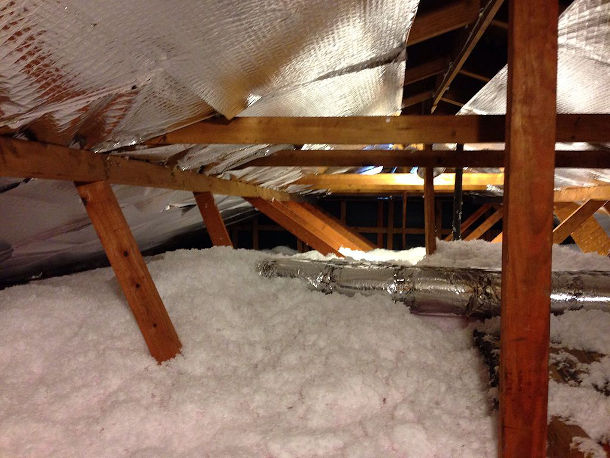
Weatherizing homes so that they leak less heat in the winter can help reduce the amount of energy needed to heat them. For example, if the home is heated with a gas boiler, better insulation means less gas will be needed to heat the house. (Photo: Jason Dale, Wikimedia Commons, CC BY-SA 3.0)
MCKIBBEN: Yeah, I mean, this is a very significant point. It's not just Europe, either. I mean, the demand for air conditioning is going to grow exponentially as this century goes on. And it's going to grow most in the hottest and poorest places. Countries like India are forecast a huge growth in air conditioner usage, because the prospect of massive heat waves across the subcontinent are enormous. We need to be able to provide that comfort as efficiently as possible. If we're just tossing old-fashioned air conditioners on buildings then the load on the electric grid is going to be enormous. It'll cancel out whatever we're doing in terms of building out renewables. So efficient, good technology like this is desperately needed around the world.
BASCOMB: Well, what kind of reactions are you getting from the Biden administration about this idea?
MCKIBBEN: From what I can tell, and from what reporters at places like The Washington Post and the Los Angeles Times have been writing, they seem interested. I mean, look, there's obviously a million things going on right now for them to deal with. And right at the moment, I'm sure they're more focused on figuring out how to get anti-tank missiles into Ukraine than they are about how to get heat pumps into Britain or Germany or France. But I think that people are starting to realize that those are the same tasks, that these are both ways to weaken this war machine that Vladimir Putin is rolling out across Central Europe. So it wouldn't surprise me if we see more and more focus on this kind of stuff going forward.
BASCOMB: Of course, there is a competing push from many in Congress to ramp up domestic oil and gas production in response to the high prices at the pump here. Do you have any sense of the traction that's receiving?
MCKIBBEN: Well, it's always going to receive traction because the fossil fuel industry owns one of our two political parties, and has, you know, intimidated the other one. And so, you know, you see even climate stalwarts like John Kerry in the last week or two reverting to "all of the above" energy language. That's why this is such an important moment. If we just use it to decide to double down on the status quo, then we will have missed an extraordinary opportunity to help Ukraine, to help the climate, to help our economy, to help the future. The fossil fuel industry obviously wants to delay the inevitable transition as long as they can. At this point, they're doing it at the cost of the physical planet, but they're also doing it at the cost of everybody intimidated by an autocrat around the world.
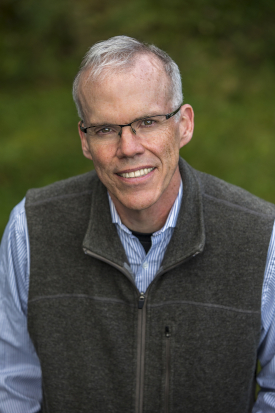
Bill McKibben is founder of Third Act and 350.org and the author of books including The End of Nature, the first mainstream book on global warming, published in 1989. (Photo: © Nancie Battaglia)
BASCOMB: You know, it does sort of feel like we're at a crossroads here, which route are we going to take? I mean, you know, in the response to the energy crisis in the 1970s, we traded in those heavy gas guzzlers for lighter, more fuel efficient cars. It seems like we have maybe a similar opportunity here to make a better choice.
MCKIBBEN: That's right, and to make a bunch of choices that, you know, I spent part of last week writing an op-ed with a colleague of mine in Ukraine, Svitlana Romanko. And what we were talking about was another choice that Americans can make, which is to stop doing business with the banks that have been both funding Putin and funding the fossil fuel industry. Third Act, this new but rapidly growing group that we've recently founded to organize people over the age of 60 around climate questions, has this pledge from people to stop doing business with these banks, and it's taken off like gangbusters because people can see the linkages. We're out of second chances, you know, we've wasted -- I wrote the first book about climate change 33 years ago. None of this is a huge surprise to anybody. We've known what's coming, we just haven't acted. So now we better.
BASCOMB: Bill McKibben is an author and activist who co founded 350.org. Bill, thank you so much for taking this time with me today.
MCKIBBEN: Well, I've really enjoyed it. Thank you.
Related links:
- Read Bill McKibben’s Substack article, “Heat Pumps for Peace and Freedom”
- The Washington Post | “Heat pumps can counter Putin and the climate crisis, advocates say”
- Video: “How a Heat Pump Works” from This Old House
- Learn more about Third Act
- About Bill McKibben
[MUSIC: Lewis Porter Phil Scarff Group, “Journey” on Three Minutes To Four, by Lewis Porter and Phil Scarff, Whaling City Sound]
BASCOMB: Coming up – As Ukrainians seek safety in other European countries advocates say the same support should be extended to climate refugees, many of whom are people of color. Keep listening to Living on Earth.
ANNOUNCER: Support for Living on Earth comes from Sailors for the Sea and Oceana. Helping boaters race clean, sail green and protect the seas they love. More information @sailorsforthesea.org. Support also comes from Friends of Smeagull the Seagull and Smeagull’s Guide to Wildlife. It’s all about the wildlife right next door to you! That’s Smeagull, S - M - E - A - G - U - L - L, SmeagullGuide.org.
[CUTAWAY MUSIC: Pat Metheny and Mick Goodrich, “Meditation" by Antonio Carlos Jobim, Live at the 2005 Monterey Jazz Festival]
Aid and Empathy for Climate Refugees
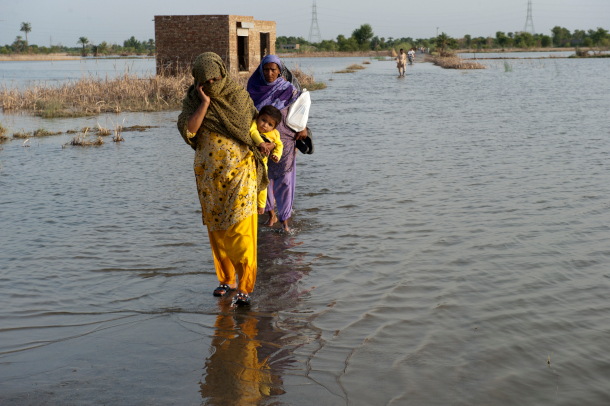
A family crosses flooded streets in Pakistan. According to the World Bank climate change could displace more than 200 million people by 2050. (Photo: Asian Development Bank, Flickr, CC BY ND NC 2.0)
BASCOMB: It’s Living on Earth, I’m Bobby Bascomb.
A report from the World Bank finds that if we continue our current trajectory for climate change, some 200 million climate refugees could be displaced worldwide by the year 2050. That’s around 100 times the roughly two and a half million Ukrainians who’ve fled their homes to escape Russian bombing. Neighboring countries have mobilized to welcome Ukrainians, offering safety and protection but many refugees from other countries have not been as warmly received. Worldwide, more than 82 million refugees have been forcibly displaced from their homes, and the vast majority of them are people of color. Syria, for example is facing one of the world’s largest refugee crisis, more than 12 million people have been displaced, some of them reportedly forced to choose between selling a kidney and selling a child to get by in extreme poverty. Yet, resources from the Global North do not flow to the Global South in a way that is commensurate with need. Kayly Ober, with Refugees International, says that lack of support is rooted in racism, something the international community needs to address as climate change exacerbates the refugee crisis in the coming decades. She points to the stark contrast in the reception that refugees of color have received compared to the warm welcome for Ukrainians.
OBER: We can see outright that although neighboring countries like Poland, and other EU countries have made exceptions for Ukrainians crossing into their borders, offered them protection, offered them the means and ability to live and work in those countries with open arms. You know, different types of refugees crossing, even in the midst of Ukraine conflict, like Africans living in Ukraine haven't received the same sorts of extended sort of protection. But more broadly, there are refugee crises all over the world. And a lot of those refugee crisis are in countries that are not white, right. And the way in which the world has responded has definitely not been as united as swift or emphatic as it has to the Ukrainian crisis. And this is in a variety of ways, first and foremost of offering protection. So we saw in the midst of the Syrian refugee crisis, as you noted, probably at its peak in 2015, 2016, millions of Syrians trying to get to the EU to seek out safety and protection. And being pushed back in many instances, being put in very precarious situations and they still are, right. So on the very same borders that are accepting Ukrainians with open arms, those same refugees are languishing at the borders and being pushed back because of the very racist nature of immigration policies in these countries. So you can't disentangle the way in which these countries are offering support from the racist underpinnings with which they offer it.
BASCOMB: Well, what are some of the ways in which war and environmental crises can overlap to create, you know, additional hardships for refugees, if any, at all?
OBER: Well, in a number of ways, so first, my colleagues at the UN Refugee Agency, UNHCR has done a variety of studies, which shows that 90% of those in fragile affected states that are currently in the midst of displacement are highly vulnerable to climate change and its effects. So you're talking about the way in which UNHCR views this is these are already highly fragile conflict affected states. You already have perhaps IDPs internally displaced people in camps, or at the margins of different cities or society in which they're not able to be in situations of resilience, because of the way in which the country is being affected by conflict and violence. And if you layer climate change on top of that, it further sort of destabilizes the ability to be resilient to these different forms of shocks. And so there's often an overlapping set of factors when it comes to sort of people who are facing displacement crises or are on the brink of facing displacement crises, including conflict and climate change.
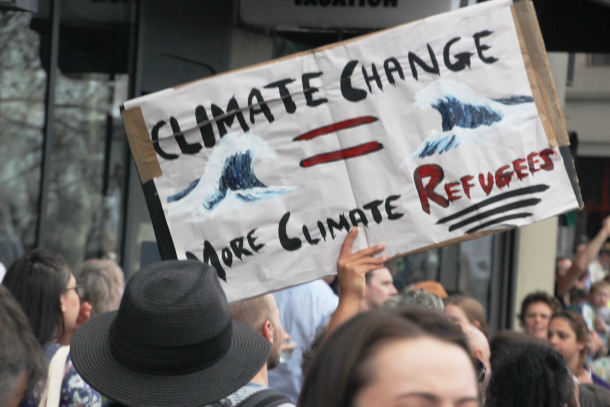
A sign reads “climate change = more climate refugees” at a Global climate strike in Melbourne Australia on September 20, 2019. (Photo: John Englart, Flickr, CC BY SA 2.0)
BASCOMB: Well, how can we accommodate all of those people? I mean, the reason they're moving is untenable to live where they are but you know, the world's not producing any more resources. If the livable part of our planet becomes smaller and smaller how do we square that circle?
OBER: Well, the first thing I should say the difference between climate related displacement, and conflict related displacement is that we have the luxury of planning. We can pinpoint hotspots, we understand the ways in which, you know, climate change may play out on the ground. And so we really can figure out different sorts of vulnerabilities or risks we need to mitigate in order to allow people to stay in places where they're from first and foremost. So that's what we should be doing. And that's what the Groundswell report kind of digs into, which is, we need to mitigate carbon emissions drastically and immediately and that would actually hedge the effects of climate change dramatically. So anywhere from 50% to 80%, of the number of people that project will be moving by 2050 could be cut, if we do so. So it's clear that policymakers have a window of opportunity to act. And so I think that's the first thing we need to understand is we can mitigate carbon emissions but also we can invest in things that are, you know, low hanging fruit that are no brainers a win win. Things like climate change adaptation so folks can have more access to climate resistant crops, better forms of irrigation technology. I think that's something that we can do to sort of mitigate the effects of climate change to ensure that people can stay at home if they would like to. Now on the flip side, we have to acknowledge that even with the greatest amount of inputs related to these sorts of measures, people will still need to move, like you said. Some places will just be uninhabitable, especially if we don't mitigate carbon emissions and we have a rapidly closing window to do so. So I think policymakers need to acknowledge this reality and understand that people may be moving to cities within their own countries, but they often can or might cross borders. And so how do we ensure that that movement is safe, that people do not put their lives at risk and they're able to come to places that would offer them a quality of life and living that is dignified, right. So I think that's really where most tensions lie.
BASCOMB: Well, what kinds of protections does the United Nations currently provide for climate refugees? Especially compared to refugees from conflict or persecution.
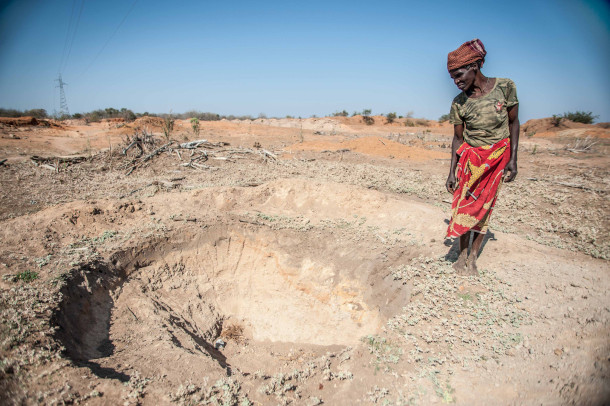
Adelaide Maphangane stands beside an empty water hole in the district of Mabalane, Mozambique. Many people come to this area to dig for water and often leave empty handed. According to the International Federation of Red Cross, the holes they are digging to reach water are getting deeper by the day. (Photo: Aurélie Marrier d'Unienville , IFRC, Flickr, CC BY NC ND 2.0)
OBER: So I think what most of us think of when we think of refugees is the quintessential sort of UN Refugee Convention that was put together in 1951. So this was post World War II, the world came together and said- we cannot let this happen again. However, what they put together was by Europeans for Europeans, right. So it's a very narrow set of issues that are included within that convention. So it's based on persecution on five sacred grounds. So something like political affiliation, race, ethnic group, religion. So it's very narrow. And nowhere in the scope of that convention does it say anything about climate change, or environmental change or disaster, right. So there's, there's this kind of gap there when it comes to international protection. So if you were to say, be moving across the border, and applying for refugee status or asylum and you were to cite climate change a factor that would not be sufficient to grant you that status. And so that's where sort of the the problem lies right now.
BASCOMB: Well, to your knowledge is there any plan to change that? I mean, the problem of climate change is here and it's only going to get worse, right? I mean, we're looking at a lot of people potentially displaced in the future. What plans, if any, are there for the United Nations to address that, you know, gaping hole here?
OBER: So the Refugee Convention is sacrosanct, and the UN Refugee Agency, UNHCR, their mandate is underpinned by this by this convention. So there's no sort of effort to change the convention. However, there's been a new efforts to sort of expand interpretations of persecution under the umbrella of this convention. So for example, could you say that, you know, in the face of climate change, say there's a devastating flood that hits your village and washes away your home and washes away the village, you ask the government to help you and the government purposely does not offer you aid and support because you're a particular social group. Do you then qualify for refugee status based on the grounds of persecution in the context of climate change, right? And I think UNHCR has just put out some legal considerations around this that essentially say- yes, you know, maybe you do qualify for persecution in this sort of instance. And can we test through sort of case law how to really push the boundaries of this existing convention? Because really, one, it's sacrosanct but, two, if we were to renegotiate that within the UN, we might come up with something that's not as strong in today's sort of anti immigrant world, right. So they really want to push the boundaries now. It's the first time ever they've really said something of that nature. And so that's really I think the direction we'll be going in.
BASCOMB: And what is the Biden administration proposing in terms of the refugee crisis and climate change?
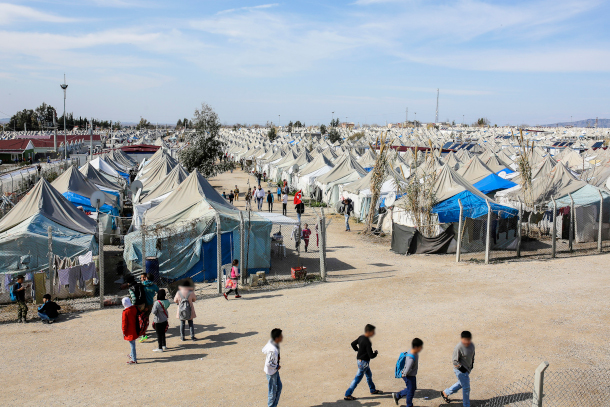
Turkey hosts more than four million refugees, including more than three million Syrians. There are about 6.8 million Syrians that are refugees and asylum-seekers, and another 6.7 million people that are displaced within Syria. (Photo: © European Union 2016 - European Parliament, Flickr, CC BY ND NC 2.0)
OBER: Well, for the first time ever, the White House requested a report on climate change and migration in February of last year. That report came out in October 2021. And it lays out the foundations of which the administration plans on exploring this issue. So it's a very exploratory paper. But what it does is establish an interagency working group that's supposed to tackle some of these thorny issues. I think the principal thing that they really need to look at is exploring sort of pathways for protection. They haven't quite hammer down what that means yet. But in a recent conference, I was at when I was on a panel with a State Department official, they said they're looking at things like legislative action around Temporary Protected Status. So how to expand that and strengthen that to include people who might be in need of that sort of protection in the face of climate change. And also additional pathways to the United States. They did not define what those kinds of pathways would be. So it could be things like more labor, migration visas from highly vulnerable countries, for instance. I could see the Biden administration doing something of that nature. They also acknowledged kind of UNHCR's legal interpretation. There may be people who are deserving of refugee status in the context of climate change and they're investigating that. But I think by and large, the Biden administration wants more than anything else to tackle sort of what they call the root causes of migration. So invest in climate change, adaptation and resilience to ensure that people will stay in the countries that they're from. Now, if that's coming from a benevolent side or not, is still a question but certainly thinking about this issue in a way they've never thought about it before.
BASCOMB: Kayly Ober is the Senior Advocate and program manager for the climate displacement program at Refugees International. Kayly, thank you so much for your time today.
OBER: Thank you so much.
Related links:
- Learn more about Kayly Ober, Senior Advocate and Program Manager of the Climate Displacement Program at Refugees International
- Read the 2021 Groundswell report on Climate Migration by the World Bank
- UNHCR Forced Displacement in 2020
[MUSIC: Balval, “Mon etoile” on Le ciel tout nu, by Steva Stojka/Rosalie Hartog, Whaling City Sound]
Beyond the Headlines
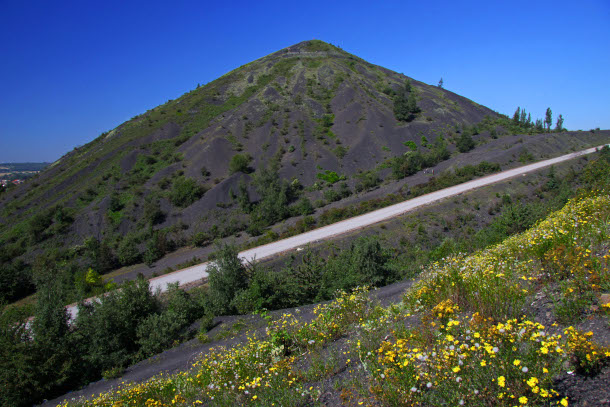
France’s Pas de Calais region, once a former coal mining region, now boasts a number of green tourism spots. (Photo: Guillaume Baviere, Flickr, CC BY 2.0)
BASCOMB: It's time for a look now beyond the headlines with Peter Dykstra. Peter's an editor with Environmental Health News. That's EHN.org and DailyClimate.org. Hey there, Peter, what do you have for us this week?
DYKSTRA: Hi, Bobby. We're going to start in coal mining region of France in the Pas de Calais, which is along the English Channel. It's part of a UNESCO site, a United Nations cultural heritage site, because this former coal mining site now includes hiking trails and a vineyard and what looked to be pyramids made out of coal slag.
BASCOMB: So these slag heaps are now a tourist trap, or at least a tourist destination. What's the attraction there?
DYKSTRA: Well, the attraction from an environmental standpoint, is that they've rehabbed the area to include trails for hikers, vineyards, Chardonnay is grown there. And Chardonnay is kind of an adaptation of the French word for carbon. But the Pas de Calais is also known to historians, because it is the place along the English Channel where the Nazis thought the D-Day invasion was going to come. That's why they were partly fooled. That's why D-Day was a very bloody but costly success for the allies. And of course, they landed in Normandy, which is to the west of there, but the Pas de Calais is where history wasn't made in World War II.
BASCOMB: Well, what else do you have for us this week?
DYKSTRA: 55 tons of lettuce have been fed to starving manatees in Florida. The manatee death toll, and of course we're talking about a threatened species, has tripled each of the last two winters. There's concern for the overall health of manatees, the future of manatees in Florida. That's why they've raised money to bring in lettuce for the manatees to eat, since their seagrass diet is disappearing due largely to pollution from farms and pollution from leaky septic tanks.
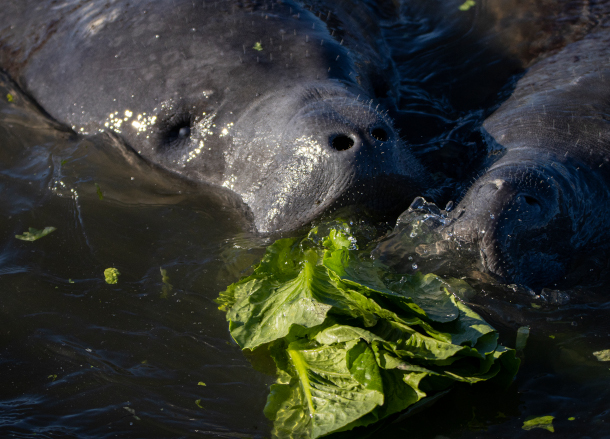
A manatee chows down on some lettuce as part of a feeding trial at the Florida Fish and Wildlife Service’s Temporary Field Response Station. (Photo: Florida Fish and Wildlife, Flickr, CC BY-ND-ND 2.0)
BASCOMB: Hmm. Well, I mean, it's wonderful that people are being so proactive, but of course, shipping in lettuce doesn't seem like a long term solution, especially if that lettuce is grown with the very same chemicals that are polluting the water and killing the seagrass.
DYKSTRA: That's right, American lettuce is typically grown elsewhere other than Florida. But it's at least the solution for some of the most adorable megafauna that we can offer here in North America.
BASCOMB: Well, what do you have for us from the history books this week?
DYKSTRA: We're going to go back to a World War II theme, one of the most famous individual Japanese soldiers in World War II, Lieutenant Hiroo Onoda would have turned 100 this week. He later in life was the founder of the Onoda Nature Schools. He learned about nature, because he was ordered to go into the Philippine jungle as an intelligence officer. And he stayed there for 29 years after the war ended because his orders said to never ever surrender. To me, he is the king of denial.
BASCOMB: Well, was he really denying reality or just very strictly following his orders?

Hiroo Onoda (right) offers his military sword to Philippine President Fernidad Marcos (left) on the day of Onoda’s surrender in 1974. (Photo: Malacañang Palace, Wikimedia Commons, Public Domain)
DYKSTRA: They air dropped messages to tell him that the war was over. There were other colleagues who came out on their own or died, they didn't last until 1974, believing the war was still on. Japan had to send in his then-elderly commanding officer to order him out. When he emerged in 74, he was a hero, who then went on to use some of his back pay to found the Onoda Nature Schools.
BASCOMB: It's an amazing story I have to say.
DYKSTRA: And when you talk about climate denial, or other science denial or vaccine denial, 2020 election result denial, all of those things, can in a strange way, be considered to be cousins or descendants of the great denial of Lieutenant Hiroo Onoda.
BASCOMB: Alright, well, Thanks, Peter. Peter Dykstra is an editor with Environmental Health News. That's EHN.org and DailyClimate.org. We'll talk again real soon.
DYKSTRA: Okay, Bobby, thanks a lot. We'll talk to you soon.
BASCOMB: And there's more on the stories on the Living on Earth website. That's LOE.org.
Related links:
- National Geographic | “This Former Coal Mining Region Now Fuels Green Tourism”
- AP News | “55 Tons of Lettuce Fed to Florida’s Starving Manatees”
- Read more about Hiroo Onoda here
[MUSIC: Johnny Burgin, “Sweet Home Osaka” on No Border Blues, by Robert Johnson/Johnny Burgin, Delmark Records]
BASCOMB: Coming up – The population of Western Monarch butterflies increased 100-fold at last count. We’ll dig into why after the break. Keep listening to Living on Earth.
ANNOUNCER: Funding for Living on Earth comes from you, our listeners, and United Technologies, combining passion for science with engineering to create solutions designed for sustainability in aerospace, building industries, and food refrigeration.
[CUTAWAY MUSIC: Jacqueline Schwab, “Antigua” on True Blue Waltz, by Keith Murphy, Midsummer Recordings]
A Patent-Free Covid Vaccine

CORBEVAX relies on pre-established protein-subunit based technology. (Photo: Spencerbdavis, Wikimedia Commons, CC BY 4.0)
BASCOMB: It’s Living on Earth, I’m Bobby Bascomb.
In the face of the global Corona Virus pandemic no one is truly safe until everyone is safe. The possibility that the virus can mutate again in the body of an infected person has public health officials pushing to vaccinate everyone in the world but many developing countries are lagging far behind. The high cost of patented vaccines has been a barrier to many low- income countries but developers of the new patent-free CORBEVAX vaccine are hoping to change that. Peter Hotez co-directs the Texas Children’s Hospital Center for Vaccine Development, which created CORBEVAX. He spoke with Living on Earth’s Aynsley O’Neill.
O'NEILL: Now many of us have become familiar with mRNA vaccines during the pandemic. But CORBEVAX doesn't use that technology. Instead, it's a protein subunit vaccine. Could you tell us a little bit about that, please?
HOTEZ: That's right. It's actually an older technology that's been around for a couple of decades. It's the same one used to make similar to one used to make the recombinant hepatitis B vaccine that parents have been giving to their kids for several decades. So it's a very well trusted technology. It's actually a vegan vaccine, because it's made through microbial fermentation and yeast. So there's no animal cells, human cells, no animal protein, human protein. So people find that attractive as well. But the real advantage is that there are a number of low and middle income countries that make their own recombinant protein, hepatitis B vaccine and yeast. You know, Vietnam does Indonesia, India, Bangladesh, the list goes on, Brazil, Argentina, so that if you really want to make a vaccine for global health, we think this is the best technology because the infrastructure's already in place to mass produce it, and you could hit the ground running. So we've been using this technology for all of our vaccines just about for instance, we have a vaccine for schistosomiasis, which causes female genital Schistosomiasis in Sub Saharan Africa that's in clinical trials. They have a hookworm vaccine, a Chagas disease vaccine. And about 10 years ago, we started doing this for Coronavirus for SARS, and MERS. And then when we got the COVID-19 sequence, we were able to plug that in pretty quickly. And so what we've done now is developed the vaccine and now we've licensed it with no patents, no strings attached to for vaccine producers to Biological E in India to Bio Farma in Indonesia to Incepta in Bangladesh. And now ImmunityBio which is building infrastructure in Botswana. And now it's been released for emergency use in India, and we just got word that the vaccine will start going into arms and kids and a couple of days and 12 and up in India. So that's very exciting to, you know, be able to make that contribution to global health.
O'NEILL: That's incredible. I know that there's been a massive, massive vaccination gap. There's something like 77% of people in high end upper middle income countries that have received at least one dose of the vaccine, but only 10% in low income countries. What do you hope CORBEVAX will be able to accomplish in terms of closing that vaccination gap?
HOTEZ: Well, that's the whole idea. So to close that vaccine inequality gap. And you know, the frustrating thing for us. So when I say us, our Texas Children's Center is co-headed by myself and my science partner for the last 20 years, Maria Elena Bottazzi. And, we saw this coming because as good as the mRNA vaccines look like they're like any new technology is learning curve before you could scale it to the 9 billion doses required for low and middle income countries. So we knew there was going to be this inequality gap. And that's why we were a bit frustrated that we couldn't tap into any of the operation warp speed support, or any of the G7 support. So we had to raise the funding on our own, but we did it. And now this is moving forward. I also think it could have a role in closing the vaccine hesitancy gap because we're hearing from so many people that for whatever reason, and I got the Pfizer biotech mRNA vaccine, and I'm grateful for it. I think it's a good vaccine. But there's still a lot of people there who are writing to us and saying, you know, we want this vaccine because it's a technology that's been around and they trust it.
O'NEILL: So what about a protein subunit vaccine, like CORBEVAX makes it more accessible to produce as opposed to an mRNA vaccine?
HOTEZ: The mRNA vaccines because of the stability of the RNA has to be kept in a deep freeze. This is simple refrigeration, again, like the recombinant hepatitis B vaccine, and another great aspect of it: it's the least expensive of the COVID vaccine. So it's in India, it's costing the company about 145 rupees a dose, which is about $1.90 a dose so. You know, when you go through the list of things, simple refrigeration, no limit to the amount you could scale, lowest cost, widespread acceptance, vegan technology, you know, it checks a lot of boxes that you'd want for a global health vaccine. In fact in Indonesia now they're preparing a version that's going to be because it's vegan. They're making halal for Muslim majority countries, also, which is, you know, just going in so many of the world's low and middle income countries are members of the OIC, the Organization of Islamic Conference. So that's another advantage.
O'NEILL: Because you're using technology that's already been well established. How difficult was it to get funding for this vaccine? What was the budget for it?
HOTEZ: Well, you know, as I said, we've been making recombinant protein based vaccines and yeast for a couple of decades now and Coronavirus vaccines for 10 years. I think the frustration was with Operation warp speed in the US, it was all based on pharma companies and incentivizing pharma companies and new technologies and speed and innovation. And ours was a little slower in terms of the production, but not by much. But we knew we'd make up for that lost time, by the fact that it could be made locally. So first funding support, we had to rely heavily on private donors. We had some funding from the National Institutes of Health about $400,000. But most of it came through private philanthropies. And it wasn't a lot. I mean, in the big scheme, it wasn't the billions, but it was about around $8 million dollars that we were able to raise. And that was enough to get us going to transfer the technology, and the Production cell bank and helping the codevelopment for low and middle income countries, India, Indonesia, Botswana, and Bangladesh. And so we always pride ourselves on being the little engine that could, we’re a team of about 20-25 scientists, and they work day and night to do this. And under difficult circumstances, because remember, in the beginning of the pandemic, everything was in shutdown. And our scientists heroically went into the labs and continued to work, we got special permission to work. So I can't tell you what an extraordinary group of scientists that we have and feel so lucky to have them.
O'NEILL: What are you excited about next with the CORBEVAX vaccine?
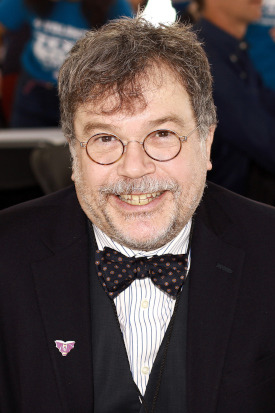
Dr. Peter Hotez directs the Texas Children’s Hospital Center for Vaccine Development. (Photo: Larry D. Moore, Wikimedia Commons, CC BY-SA 4.0)
HOTEZ: We're excited now that this will be a pediatric vaccine, after all, our Texas Children's Hospital Center for vaccine developments, base of the Children's Hospital. And also we're not we're looking at this as a booster dose for other vaccines, because some of the protection afforded by some of the in the whole inactivated virus vaccines out of China is not as great as we'd like or, you know, some of the adenovirus vectored vaccines, or even the mRNA. So we think this will be a booster vaccine as well. So it covers a lot of ground. We're very much about vaccine diplomacy and building vaccine opportunities, because we think that's been the problem. All along the whole, it was kind of an upstream science policy failure thinking that only the multinational pharma companies could do this. And only they had the ability. And we saw the product of that, which is you got some interesting vaccines, but it never really filtered down in a big way to the LMICs the low and middle income countries. And so my feeling all along has been, you know, I have nothing against the multinational pharma companies, they do a lot of important work, but the ecosystem needs more balance to bring in the vaccine producers that call themselves the Developing Country Vaccine Manufacturers Network (DCVMN). And I think that will actually help not only with vaccine equity, getting the world vaccinated faster, and I also think it'll help with some of the rising vaccine hesitancy that we're seeing now not only in the US and Canada in Western Europe, but also now in LMIC's as well.
BASCOMB: Peter Hotez is co-director of the Texas Children’s Hospital Center for Vaccine Development. He spoke with Living on Earth’s Aynsley O’Neill.
Related links:
- More on CORBEVAX from Texas Children's Hospital
- Scientific American | "A COVID Vaccine for All"
- VICE | "Open-Source Vaccines Got More Funding From Tito’s Vodka Than the Government"
[MUSIC: Costo Rico, “Por Esos Mares” on Radio Latino, by Costo Rico, Putumayo World Music]
The Comeback Monarchs
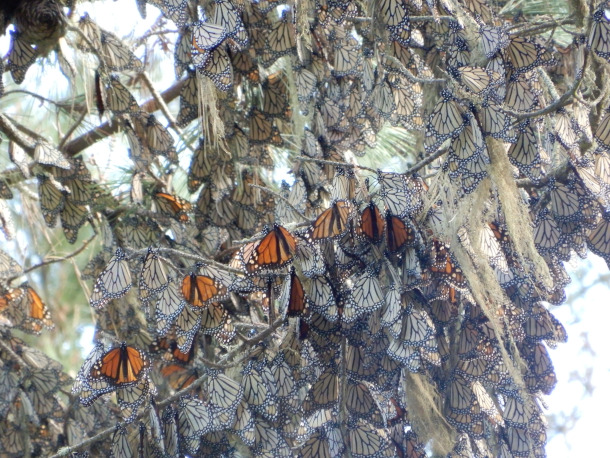
In a cluster of butterflies about a dozen Western Monarchs sit high up flapping their wings in the Pacific Grove Monarch Butterfly Sanctuary (Photo: Candy Sarinkonda, Flickr, CC BY 2.0)
BASCOMB: Western Monarch Butterflies, those that live West of the Rocky Mountains, were once common. Upwards of 10 million migrated on the west coast as recently as the 90s. But they’ve faced a precipitous decline since then attributed to habitat loss and pesticides. In 2021 volunteers were able to count just 2,000 Western Monarchs. Biologists feared extinction was on the horizon but this year more than 250,000 western monarchs were counted, that’s a 100 fold increase. It’s still a far cry from their historical numbers but ecologists like Scott Hoffman Black are encouraged. Scott is the Executive Director of the Xerces Society in Portland, Oregon. He says there are a lot of factors that could account for the recent rebound of Western Monarchs.
HOFFMAN: Yeah, so we don't have all the answers for why the big increase this year, and we're really still trying to tease out the reasons. As a colleague named Louis Yang, who's a professor at University of California, Davis said, it's likely because of what he called a series of fortunate events. Monarchs had the right weather conditions for likely exceptional breeding and for successional migration back to overwintering sites. One thing we need to remember about monarchs is they're not like place based animals. In the West, they overwinter along the coast. And then the first generation flies out to find host plants and nectar sources, and likely lays their eggs on milkweed, their only host plant, somewhere in the coast range or the Central Valley. Then those caterpillars grow up turn into butterflies, they might fly to Nevada, they might fly to Southern Oregon. This happens over three or four times to where monarchs might be in Utah or Southern Idaho or Arizona or Nevada, then that last generation makes it all the way back. It's quite epic when you think about it. So, but they found good breeding, they found a way to successfully migrate. And what that means is, they were able to capitalize on enough of the resources that they need. And that's milkweed, and nectar sources. So we think a lot of this had to do with weather. But that's because they had the resources still in the environment to use. Now, there are some other ideas out there, we might have had more migrants from the eastern monarch population, the Eastern monarch population is much bigger than the Western, or some resident monarchs that seemed to be in California, year round might have been playing a role. But we likely think it's mostly great weather and being able to capitalize on on these resources for both breeding and migration.
Western Monarchs, with their iconic black and orange color scheme, aggregate on a Monterey pine tree branches on December 21, 2021 (Photo: Candy Sarinkonda, Flickr, CC BY 2.0)
BASCOMB: Now, of course, monarchs are pollinators and an important food source for many different species, despite the fact that they're somewhat poisonous. How did this dramatic increase affect the greater ecosystem? And then, of course, the reverse of that question, if we were to lose Western monarchs altogether, how might that impact the local ecology?
HOFFMAN: Yeah, I think it is important to have an animal like monarchs in the landscape, who you can imagine they are eaten by birds, they're eaten by rodents, they do incidental pollination. They are also herbivores and they eat plants and so their poop is really readily available fertilizer. So they're really, really important. And you can imagine going from millions of monarchs to just a few thousand that, that would have big up and down impacts on our ecosystems. And I will also point out that I think the issue with monarchs is a little bit like the canary in the coal mine as well, in that when we see declines in a ubiquitous animal like that, we're also mirroring those declines in animals we don't really notice and insects generally beyond monarchs are really driving our systems. If you like fish in our streams, you should like an insect, if you like birds in your backyard over 90% of songbirds feed their young insects. If you like pollination, if you like natural ecosystems that have seeds to continue to thrive, you think pollinators, and if you like to eat you also think pollinators. So monarchs are important but I think the bigger issue that when we see something like this happening to monarchs, we know that this is an issue that is affecting a lot of other insects and that could eventually be catastrophic for ecosystems as well as the humans that rely on them.
BASCOMB: Well, now that Western monarchs are starting to rebound, what can we do to support them and encourage more population growth?
HOFFMAN: So number one, the monarch butterfly deserves full protection under the Endangered Species Act. This is an animal that in the East has declined by 70% to 80%. In the West, even with this year's uptick it has declined by 95%. And the US Fish and Wildlife Service found that the entire population East and West deserved protection under the Endangered Species Act, but that they were precluded for higher priority actions.
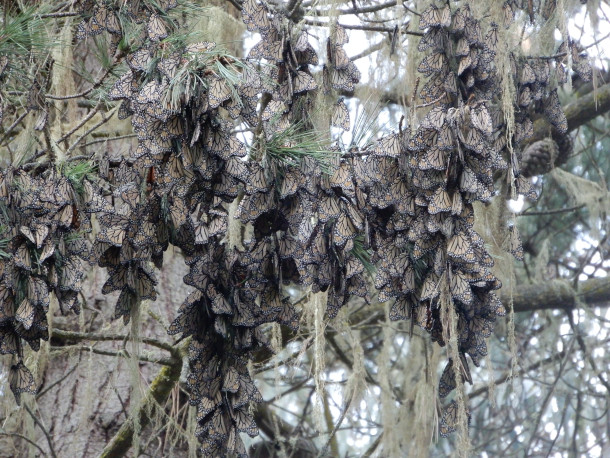
Western Monarchs forming monarch chandeliers on Monterey pine and Cypress trees (Photo: Candy Sarinkonda, Flickr, CC BY 2.0)
BASCOMB: Why?
HOFFMAN: Well, it means that they don't have the money to list all of the species in their portfolio. So they've punted this to likely 2024 when they'll make a decision likely to finally list the monarch, but we'd like them to move faster. But on the individual scale, the neat thing about monarchs is that anybody can take action. If you live in a town or a city or a farmer, or manage a park or manage a National Forest, you can ensure that we've got habitat for these animals. That means native milkweed that these animals can lay their eggs on and that the caterpillars can eat to become an adult monarch. We also need to plant lots of native nectar sources, lots of native flowers. Monarchs as you might imagine, whether they're in the east or west, they're traveling hundreds, if not thousands of miles and they need a lot of energy to do that. And so we need to maximize the amount of flowers out there. Also, we really need to take action on pesticides. If you you know, have a yard, just stop using pesticides, you don't need pesticides in your yard. If you're a farmer, we can use pesticides in a more thoughtful manner to grow food that is healthy for both humans and healthy for the environment. So it's the one thing about insects in general, you know, I get to talk about bees and butterflies and other insects and the neat thing about it is we need to be pushing to protect polar bears and wolves, but not everybody can take individual action. And in this case, everybody can take individual action to protect these animals.
BASCOMB: Scott Hoffman Black is a conservationist and Executive Director with the Xerces Society. Scott, thanks for taking this time with me today.
HOFFMAN: Thank you so much for having me.
Related links:
- PBS "Western monarch populations grew over 100-fold in 2021. Why?"
- Xerces "Western Monarch Call To Action"
- Xerces "Monarch Butterfly Conservation"
- Xerces "Milkweed Finder"
- Xerces "Bring Back the Pollinators"
[MUSIC: Sacha Nairobi, “Princesa” on Radio Latino, by Sacha Nairobi, Putumayo World]
Bald Eagle in Central Park

Born in New Haven, Connecticut in 2018, Rover the bald eagle is now a famous resident of Central Park. (Photo: Ryan F. Mandelbaum, Flickr, CC BY 2.0)
BASCOMB: Monarchs aren’t the only animals enjoying a population boom. Bald Eagle numbers have roughly quadrupled in the last decade, up to more than 300,000 today. They are becoming so common that many people, including Living on Earth’s Sophia Pandelidis, are spotting bald eagles in one of the last places you might expect.
[SOUNDS OF TRAFFIC, TALKING]
PANDELIDIS: The sharp silhouette of New York City slices into a frigid blue sky. On this Sunday morning, Central Park is buzzing, alive with the chatter of friends and family. Children, rosy-cheeked, race among the trees. Dogs thump their tails, and those weary of the bustling city bask in this oasis of nature for a few moments.
[SOUNDS OF BIRDS CHIRPING]
PANDELIDIS: A mere tourist, I stroll among them with a college friend. As we shuffle along the one of the reservoirs, an unexpected sight suddenly bursts into view.
[BALD EAGLE CRIES]
PANDELIDIS: A flurry of wings, and yes—could it be?—a pinprick of white soaring above the water. A bald eagle—majestic and wild—in Central Park, of all places! Hands all around me point towards the sky, and voices exclaim in surprise.
[BALD EAGLE CRIES FROM Macaulay - Credit Paul Marvin and Macaulay Library]
PANDELIDIS: I came for a weekend trip to the “big city,” only to find that wildlife is everywhere, even here. Later I would learn that this bald eagle has long been known to local birders, and he’s even got a name. “Rover” was born in New Haven, Connecticut in 2018, along with two siblings. The chicks caught the attention of local biologists, who banded the birds to keep track of them. Rover turned up in Brooklyn in 2020, then moved to Manhattan this year. Loads of New Yorkers have stories of watching Rover hunt in Central Park. Just catching a glimpse of this now-famous character was thrilling for me. Bald eagle populations plummeted in the 20th century largely from hunting, habitat loss and eating prey animals that had been contaminated with DDT, which thins eggshells. Scientists believe Rover’s presence in New York City may be a sign that the bald eagle is making a comeback in urban areas as well as more wild ones. When we create and care for parks in our cities, they become little biodiversity hotspots that benefit not only us, but our feathered friends too.

Living on Earth’s Sophia Pandelidis (right) and her college friend, Christopher (left), stroll along the Jacqueline Kennedy Onassis Reservoir in Central Park, where they saw Rover fly over the water. (Photo: Sophia Pandelidis for Living on Earth)
[MUSIC: Dan Musselman, “Clear Skies” composed and recorded by Dan Musselman]
PANDELIDIS: Maybe the next time I am in New York, the flowers will be in bloom, and I will see Rover fly again. Maybe, just maybe, Rover will have a mate in tow, and new life will be on the horizon.
[BALD EAGLE CRIES]
BASCOMB: That’s Living on Earth’s Sophia Pandelidis.
Related links:
- New York Times | “If Rover Can Make it Here, Perhaps Bald Eagles Can Make it Anywhere”
- NBC News | “A Bald Eagle Nicknamed ‘Rover’ Is Circling Manhattan’s Central Park”
[MUSIC: Dan Musselman, “Clear Skies” composed and recorded by Dan Musselman]
BASCOMB: Living on Earth is produced by the World Media Foundation. Our crew includes Naomi Arenberg, Paloma Beltran, Chloe Chen, Iris Chen, Josh Croom, Gabriella Diplan, Jenni Doering, Mark Kausch, Mark Seth Lender, Don Lyman, Louis Mallison, Aynsley O’Neill, Sophia Pandelidis, Jake Rego, Teresa Shi, and Jolanda Omari. Tom Tiger engineered our show. Alison Lirish Dean composed our themes. You can hear us anytime at L-O-E dot org, Apple Podcasts and Google Podcasts, and like us, please, on our Facebook page - Living on Earth. We tweet from @livingonearth. And find us on Instagram at livingonearthradio. Steve Curwood is our Executive Producer, I’m Bobby Bascomb. Thanks for listening!
ANNOUNCER: Funding for Living on Earth comes from you, our listeners, and from the University of Massachusetts, Boston, in association with its School for the Environment, developing the next generation of environmental leaders. And from the Grantham Foundation for the protection of the environment, supporting strategic communications and collaboration in solving the world’s most pressing environmental problems.
ANNOUNCER 2: PRX.
Living on Earth wants to hear from you!
Living on Earth
62 Calef Highway, Suite 212
Lee, NH 03861
Telephone: 617-287-4121
E-mail: comments@loe.org
Newsletter [Click here]
Donate to Living on Earth!
Living on Earth is an independent media program and relies entirely on contributions from listeners and institutions supporting public service. Please donate now to preserve an independent environmental voice.
NewsletterLiving on Earth offers a weekly delivery of the show's rundown to your mailbox. Sign up for our newsletter today!
 Sailors For The Sea: Be the change you want to sea.
Sailors For The Sea: Be the change you want to sea.
 The Grantham Foundation for the Protection of the Environment: Committed to protecting and improving the health of the global environment.
The Grantham Foundation for the Protection of the Environment: Committed to protecting and improving the health of the global environment.
 Contribute to Living on Earth and receive, as our gift to you, an archival print of one of Mark Seth Lender's extraordinary wildlife photographs. Follow the link to see Mark's current collection of photographs.
Contribute to Living on Earth and receive, as our gift to you, an archival print of one of Mark Seth Lender's extraordinary wildlife photographs. Follow the link to see Mark's current collection of photographs.
 Buy a signed copy of Mark Seth Lender's book Smeagull the Seagull & support Living on Earth
Buy a signed copy of Mark Seth Lender's book Smeagull the Seagull & support Living on Earth

